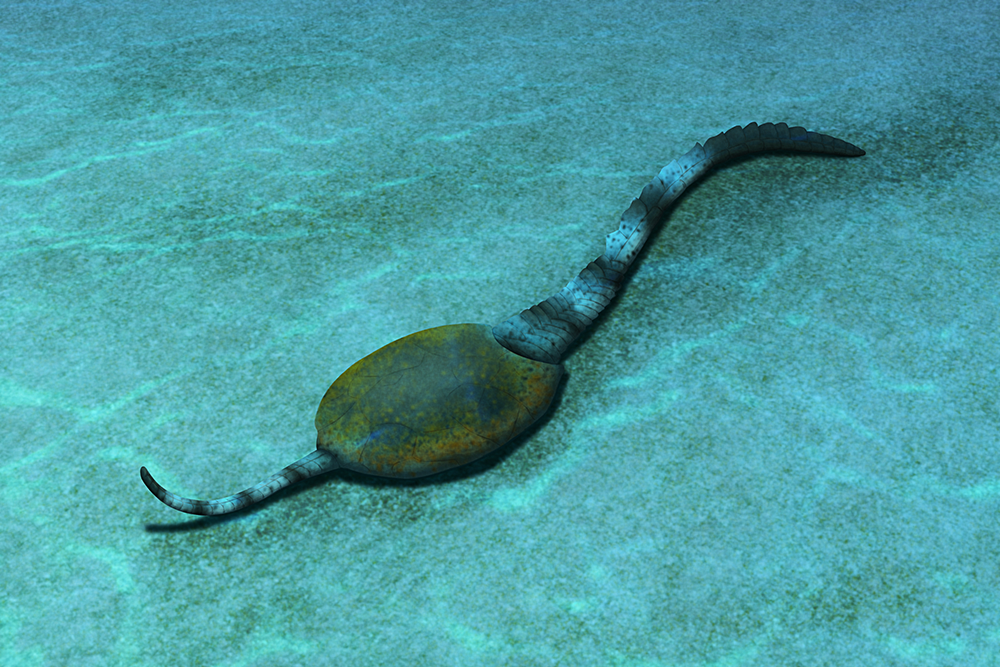Syringocrinus paradoxicus from the Upper Ordovician of North America (~450 mya). Measuring up to around 6cm long (2.3″), it was part of an extinct group of marine animals known as solutes – characterized by irregularly-shaped bodies covered in calcite armor plates, the structure of which suggest they were echinoderms despite their complete lack of any proper symmetry.
It had two appendages, one a short “arm” that was probably used for feeding on food particles suspended in the water, and the other forming a longer stalk-like “tail” that may have served to propel it along the seafloor.
Solutes were once thought to be closely related to the equally weird-looking stylophorans, but some versions of the echinoderm family tree place them much further apart, suggesting their superficial similarities may have been due to convergent evolution instead.

